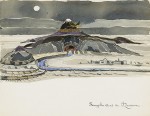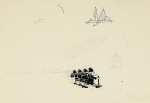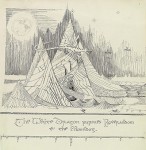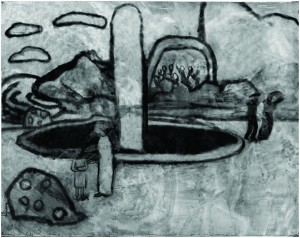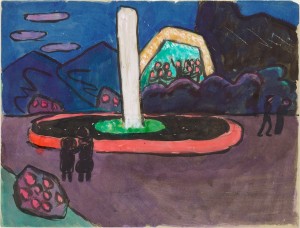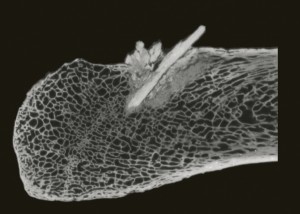Marine archaeologists from the University of the Ryukyus in Okinawa have discovered the wreck of a ship from one of Kublai Khan’s invasion fleets off the coast of Nagasaki. Kublai Khan attempted two invasions of Japan, one in 1274 with an estimated 900 ships and 22,000 troops, the other in 1281 with an estimated 4,400 ships and 140,000 troops. Both invasion attempts would quickly end in disaster thanks to two perfectly timed — some would say divinely timed — typhoons, burying the Great Khan’s navies in the Japanese seabed.
A part of the hull was first identified last year, but an in depth archaeological exploration of the site only began last month.
The warship was located with ultrasonic equipment about 3 feet beneath the seabed at a depth of 75 feet. The archeological team, from Okinawa’s University of the Ryukus, had been carrying out a search of the waters around Takashima Island, in Nagasaki Prefecture, because the area had yielded other items from Mongol ships.
Historical records suggest that some 4,400 ships carrying 140,000 Mongol soldiers landed in Japan in 1281 and skirmished with samurai in northern Kyushu. But after returning to their boats, the fleet was struck by a devastating typhoon that put an end to the invasion plans – a storm known to all Japanese as “kamizake,” meaning divine wind, and again invoked in the dying days of the Second World War.
The researchers believe the boats tried to find shelter in the coves of northern Kyushu, an assumption borne out by the discovery by Professor Yoshifumi Ikeda’s team.
Anchor stones and cannon balls from the Yuan Dynasty fleets have been found in the area before, but no remains of vessels. This wreck is the first of Kublai Khan’s ships to be discovered, and considering it’s almost 800 years old and sank in a divine wind, it’s in quite good condition. The mast and top structures are gone, but a large section of the ship’s hull, including a keel almost 50 feet long and more than 1.5 feet wide, ribs, bulkheads, and rows of wood planking still nailed to the keel. Preserved by layers of silt, the planks still have some of their original grey paint.
The team also found weapons, ink stones, Yuan Dynasty pottery and hundreds of bricks used as ballast in the immediate vicinity of the shipwreck. It’s the artifacts together with the structure of the vessel that mark the wreck as a 13th century Yuan warship and thus one of Kublai Khan’s invading fleet. The location indicates it was part of the second failed invasion.
Scientists plan to expand the exploration of the area to see if more of the ship can found, with an eye to the possibility of maybe one day lifting the entire vessel and preserving it. As of right now, however, there are no plans to attempt salvage. The wreck will be covered with a protective netting to keep it from further damage. Meanwhile, Ikeda’s team hopes to create a replica of the complete Yuan warship based on the archaeological remains.
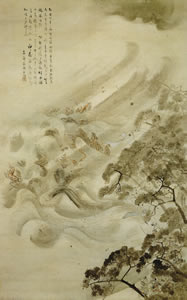 This will answer some important questions about Mongol shipbuilding, and about Kublai Khan’s fleets in particular. Historians and chroniclers have long said that Kublai Khan put together his navies from scratch in less than a year, even the 4,400 ships from the larger second invasion. According to the Goryeosa, a 15th century history of Korea’s Goryeo Dynasty (918–1392), Kublai Khan was in a rush and thus filled his navy with flat-bottomed riverboats instead of taking the time to build proper ocean-going ships. Those traditional boats did not have curved keel so they capsized easily and were extremely hard to manage in high seas. Discovering the first hull and keel of a Yuan warship from the fleet ever found, therefore, is a historical divine wind.
This will answer some important questions about Mongol shipbuilding, and about Kublai Khan’s fleets in particular. Historians and chroniclers have long said that Kublai Khan put together his navies from scratch in less than a year, even the 4,400 ships from the larger second invasion. According to the Goryeosa, a 15th century history of Korea’s Goryeo Dynasty (918–1392), Kublai Khan was in a rush and thus filled his navy with flat-bottomed riverboats instead of taking the time to build proper ocean-going ships. Those traditional boats did not have curved keel so they capsized easily and were extremely hard to manage in high seas. Discovering the first hull and keel of a Yuan warship from the fleet ever found, therefore, is a historical divine wind.
The Kamikaze and Japan’s two-time defeat of the mighty Mongol war machine were nation-defining events. Before the Yuan invasions, the samurai class had never fought together against a foreign invader. They had only fought amongst themselves. Although at first their one-on-one dueling approach to warfare (even large forces arrayed against each other still picked an opponent and duked it out hand to hand) was easily defeated by the Mongol showers of arrows, artillery and coordinated army combat, the Japanese learned the lesson and spent the next seven years fortifying the coastline with stone walls, forts and other defensive structures. Those defenses worked. The outnumbered Japanese were able to repulse Mongol attacks from the fortifications and thus kept the second invasion fleet at sea and smack in the path of the two-day typhoon that would sink 80% of it.
Until War War II, Kublai Khan’s thwarted attempts were the closest Japan would come to invasion in 1500 years.


